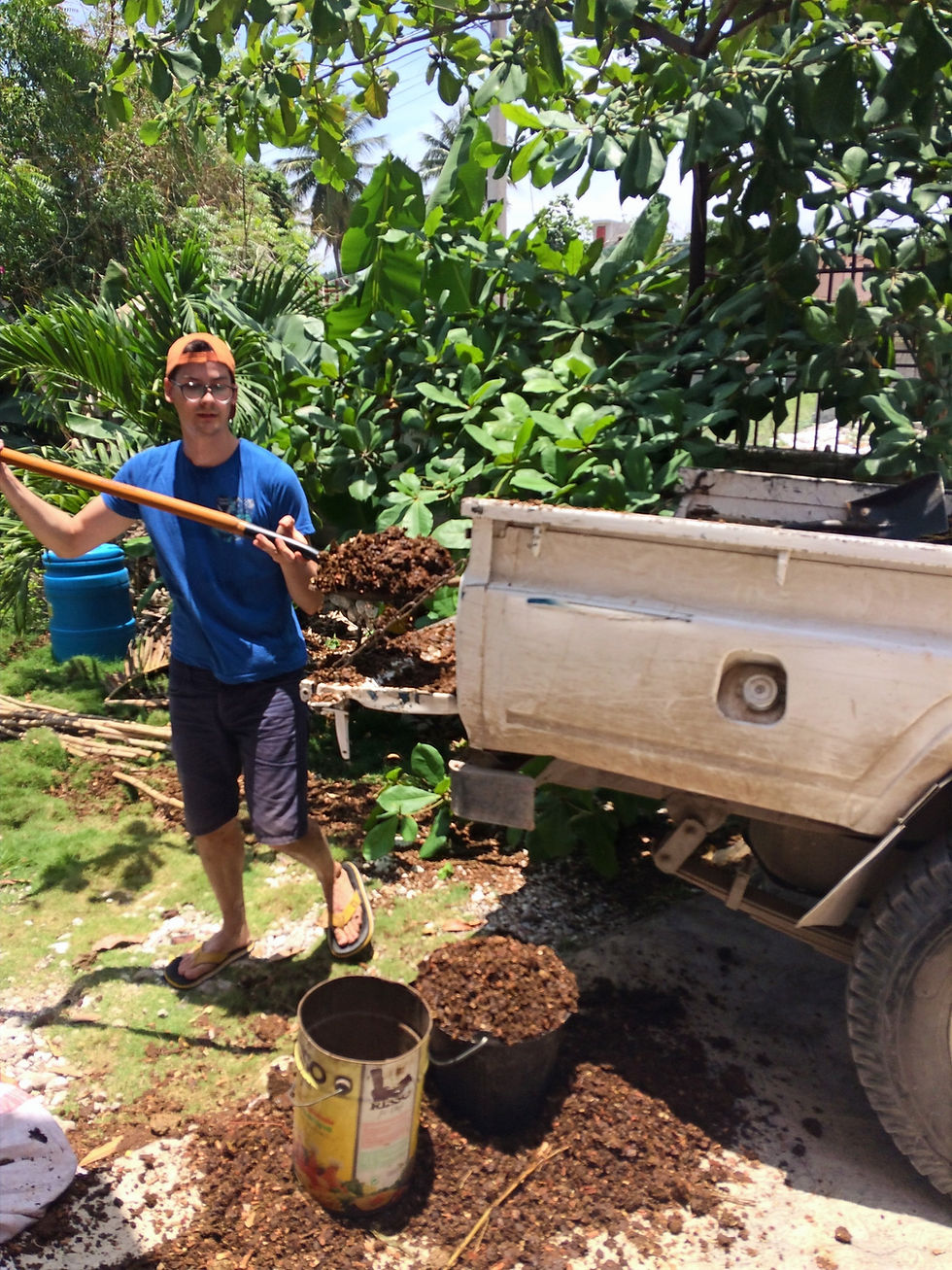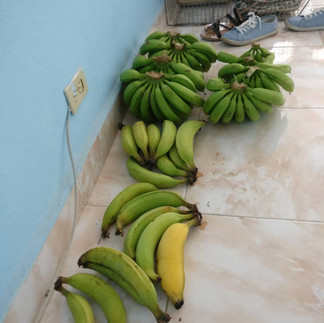A singular approach to agronomy
- florianpignol2
- 25 sept. 2021
- 3 min de lecture
When I think about what drives me to live under tropical latitudes, the first impulse is Nature. The landscapes, their flora, hills and clear sky form a poetic representation of what my dream spot could be.
The diversity of fruits we can find in the outdoor markets is innumerable. I could write a whole post about the stall based mazes covered by small roofs, designed to protect traders and goods from the fierce sun. Yet, before going to the trade centers, I can start with my backyards.

Here, Earth seems to express her strength through a dense presence of prolific trees. Each square meter is a candidate to host productive plants. Well, this is what I tell to myself to explain why every backyards I monitored were closer to a messy fruit factory rather than the sophisticated gardens of Versailles.
Searching for some elegance in my properties, I decided to become an apprentice in agronomy. I aimed at putting some order in the place, no need to say, I failed gracefully.
A 8 meters mango tree
In Haiti, I settled down in Les Cayes surroundings. The garden had a 8 meters tree which produced juicy mango every days during the appropriate season. As much desirable as it sounds, I had to face two problems. First, when the fruit is ripe, it falls from its branch. Giving the height and that the tree was next to the entry door of the house, we were threatened by plant based grenades, ready to explode in our faces at any time. At some point, we were used to shout "MANGO TIMBER!" when we heard a series of cracks followed with a low frequency "boom". Second, the quantity of fruits laying on the ground combined with the local temperature and humidity, yielded to rapid decomposition. This process of decay that takes place when a fruit changes chemically is smelly, very smelly.
Facing this challenge was my first task as an agronomist apprentice. I decided to pre-collect the round and reddish weapons before they would fall. In order to reach the top ones, I attached a rake to a bamboo stick, positioned the rake's teeth between the fruit and its bond with the branch, and pulled sharply. Then, a pathetic choreography took place where I tried to catch on the fly the falling bomb while hanging the telescopic rake with my left hand. Failing would mean to be painted in yellow and perfumed with tropical flavors. Success ratio will not be communicated.
After several days of efforts and dance, the rake got stocked into the tree, hanging to a not ready enough mango. I had two choices, or climb and recover it, or wait for the mango to ripe, and fall with the rake. I am a patient person.

Banana Tree forest
My first "agronomic revelation" happened when I was working on a banana forest that populated my backyard. I was asking for advise to an experienced (not to say senior, not to say 80 years old, not to say old) agronomy engineer on how to proceed with banana trees. There I learnt that, while the banana plant is colloquially called a banana tree, it's actually an herb!! Plus, it is the tallest one on earth ! As I was recovering from this striking information, he added "your ground is lacking life, I'll come back tomorrow with the appropriate treatment".
The due day came, a Sunday, and with it, my friend and its truck full of cow excrement, freshly collected from his farm. I was offered a shitty Sunday.

After spreading the Organic, eco-responsible, input and waiting some days, a second phase started. I had to chop off small banana herbs and replant them in available spaces. Indeed, once a herb gives a hand of bananas, it dies. Therefore, this process allows to have a continuous production.
Truth is, it was an excellent excuse to practice Machete skills!















Me encantó el diseño de ese 'artilugio largo punzante' para atrapar mangos jaja Te estás convirtiendo el el Mcgyver jardinero!!
Por cierto, ese árbol de 8 metros suena estupendo para practicar telas acrobáticas... Ahí dejo la idea! (Claro que antes deberás utilizar el artilugio para no ser atacado por mangos porque si no mal rollo!)
Un abrazo!
Morí por los mangos! qué lujo aunque también mucho trabajo. Y de las bananas ni idea que eran una planta ni que morían al dar el fruto.
Cariños: F, M y P.
Thanks to share this great experience 💪👌